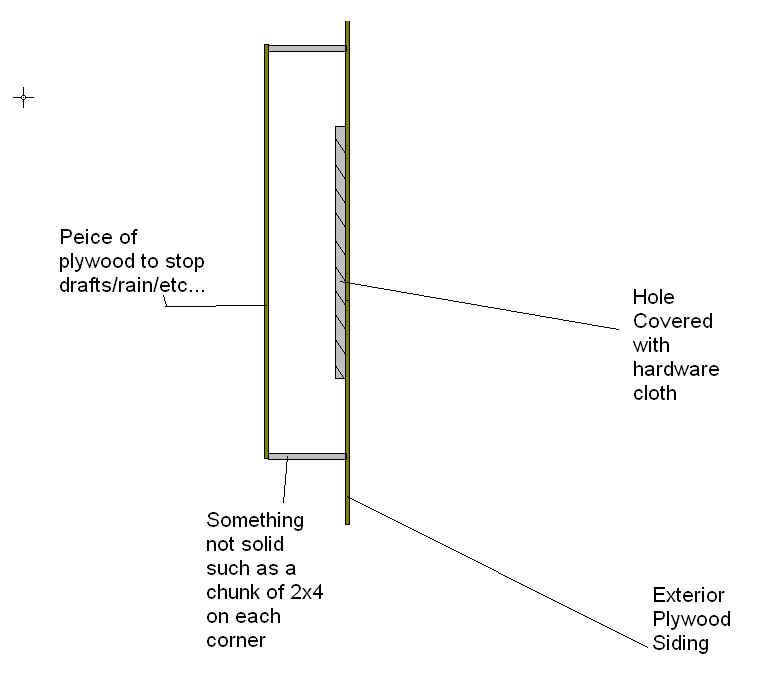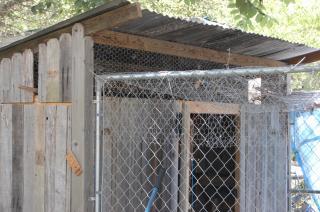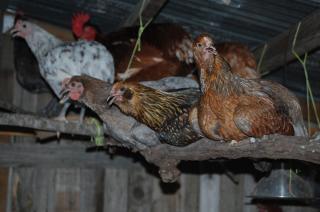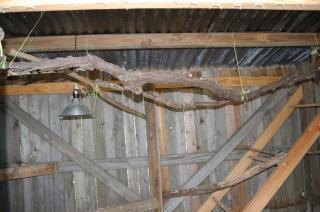I was familiar with the Murray, Kentucky area about 35 years ago. As I remember, the summers were hot and sticky (occasionally above 100 though usually in the 90's) and the winters occasionally got down to single digits, maybe rarely below zero.
You did not give rough dimensions, which would help. I think what you are doing is covering the hardware-covered opening with plywood offset some distance, leaving an opening at the bottom for air to enter.
I don't see the gain for all this work. Your effective ventilation area is the size of the opening on the bottom, not the size of the area covered with hardware cloth. I think you would be better off to put the opening horizontal, covered with hardware cloth. If you put it on the side the wind and rain normally does not come from you can just put a 2x4 above it, remembering to caulk it, and it should keep the rain out. It will let light in too, which I don't think your design would. Your would have to caulk and slope the top of your design or it would hold water, rotting out faster. If you felt more comfortable, instead of a 2x4 you could slope some plywood above the opening to keep the rain out, but I'd recommend a horizontal opening, not a vertical opening.
I'd have some concerns in putting in an area that is basically inaccessable. Spiders and other creepy crawlies will set up residence in there, birds may be encouraged to nest there, or something else you don't want around may like to hide in there.
I have roughly the same climate as you, maybe just a tad colder in the winter. I built my coop in the end of a shed so I have one totally protected side. I have hardware cloth covered openings all around the top of mine, about a foot deep, under the overhangs and well above the roosts. These stay open all the time. At ground level, inside the shed side so it is totally protected against rain and pretty much wind (the shed is not solid windproff construction) I have a 7' x 1' opening, covered with hardware cloth, that can be blocked in winter.







